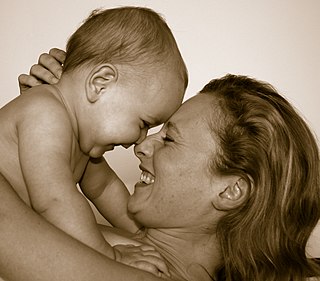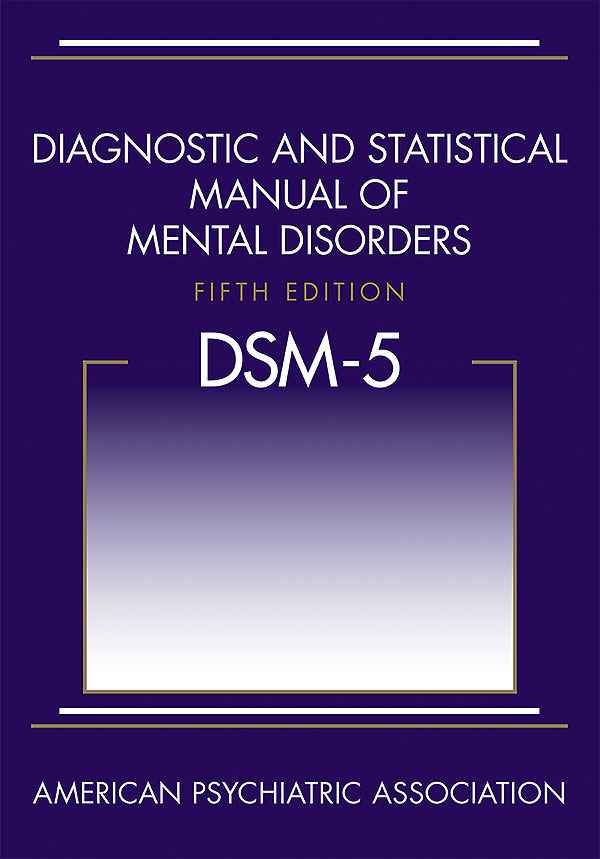Related Research Articles

Post-traumatic stress disorder (PTSD) is a mental and behavioral disorder that can develop because of exposure to a traumatic event, such as sexual assault, warfare, traffic collisions, child abuse, domestic violence or other threats on a person's life. Symptoms may include disturbing thoughts, feelings, or dreams related to the events, mental or physical distress to trauma-related cues, attempts to avoid trauma-related cues, alterations in the way a person thinks and feels, and an increase in the fight-or-flight response. These symptoms last for more than a month after the event. Young children are less likely to show distress, but instead may express their memories through play. A person with PTSD is at a higher risk of suicide and intentional self-harm.
Dissociation, as a concept that has been developed over time, is any of a wide array of experiences, ranging from a mild emotional detachment from the immediate surroundings, to a more severe disconnection from physical and emotional experiences. The major characteristic of all dissociative phenomena involves a detachment from reality, rather than a loss of reality as in psychosis.
Attachment disorder is a broad term intended to describe disorders of mood, behavior, and social relationships arising from unavailability of normal socializing care and attention from primary care giving figures in early childhood. Such a failure would result from unusual early experiences of neglect, abuse, abrupt separation from caregivers between three months and three years of age, frequent change or excessive numbers of caregivers, or lack of caregiver responsiveness to child communicative efforts resulting in a lack of basic trust. A person's attachment style is permanently established before the age of three. A problematic history of social relationships occurring after about age three may be distressing to a child, but does not result in attachment disorder.

Reactive attachment disorder (RAD) is described in clinical literature as a severe and relatively uncommon disorder that can affect children. RAD is characterized by markedly disturbed and developmentally inappropriate ways of relating socially in most contexts. It can take the form of a persistent failure to initiate or respond to most social interactions in a developmentally appropriate way—known as the "inhibited form". In the DSM-5, the "disinhibited form" is considered a separate diagnosis named "disinhibited attachment disorder".
Psychological trauma is damage to a person's mind as a result of one or more events that cause overwhelming amounts of stress that exceed the person's ability to cope or integrate the emotions involved, eventually leading to serious, long-term negative consequences. Trauma is not the same as mental distress or suffering, both of which are universal human experiences.
Adjustment disorder (AjD) is a mental and behavioral disorder, which is a maladaptive response to a psychosocial stressor that occurs when an individual has significant difficulty adjusting to or coping with a stressful psychosocial event. The maladaptive response usually involves otherwise normal emotional and behavioral reactions that manifest more intensely than usual, causing marked distress, preoccupation with the stressor and its consequences, and functional impairment.
Acute stress disorder is a psychological response to a terrifying, traumatic, or surprising experience. Acute stress disorder is not fatal, but it may bring about delayed stress reactions if not correctly addressed.
Dissociative disorders (DD) are conditions that involve disruptions or breakdowns of memory, awareness, identity, or perception. People with dissociative disorders use dissociation as a defense mechanism, pathologically and involuntarily. The individual suffers these dissociations to protect themselves. Some dissociative disorders are triggered by psychological trauma, but depersonalization-derealization disorder may be preceded only by stress, psychoactive substances, or no identifiable trigger at all.
Complex post-traumatic stress disorder is a psychological disorder that can develop in response to prolonged, repeated experience of interpersonal trauma in a context in which the individual perceives little or no chance of escape. C-PTSD relates to the trauma model of mental disorders and is associated with chronic sexual, psychological, and physical abuse or neglect, or chronic intimate partner violence, victims of kidnapping and hostage situations, indentured servants, victims of slavery and human trafficking, sweatshop workers, prisoners of war, concentration camp survivors, residential school survivors, and prisoners kept in solitary confinement for a long period of time. It is most often directed at children and emotionally vulnerable adults, and whilst motivations behind such abuse vary, though mostly being predominantly malicious, it has also been shown that the motivations behind such abuse can be well-intentioned. Situations involving captivity/entrapment can lead to C-PTSD-like symptoms, which can include prolonged feelings of terror, worthlessness, helplessness, and deformation of one's identity and sense of self.

The Diagnostic and Statistical Manual of Mental Disorders, Fifth Edition (DSM-5), is the 2013 update to the Diagnostic and Statistical Manual of Mental Disorders, the taxonomic and diagnostic tool published by the American Psychiatric Association (APA). In the United States, the DSM serves as the principal authority for psychiatric diagnoses. Treatment recommendations, as well as payment by health care providers, are often determined by DSM classifications, so the appearance of a new version has practical importance. The DSM-5 is the first DSM to use an Arabic numeral instead of a Roman numeral in its title, as well as the first "living document" version of a DSM.
Memory is described by psychology as the ability of an organism to store, retain, and subsequently retrieve information. When an individual experiences a traumatic event, whether physical or psychological, their memory can be affected in many ways. For example, trauma might affect their memory for that event, memory of previous or subsequent events, or thoughts in general. Additionally, It has been observed that memory records from traumatic events are more fragmented and disorganized than recall from non traumatic events. Comparison between narrative of events directly after a traumatic event versus after treatment indicate memories can be processed and organized and that this change is associated with decrease in anxiety related symptoms.
Disinhibited attachment disorder (DAD) according to the International Classification of Diseases (ICD-10), is defined as:
Brief psychotic disorder — according to the classifications of mental disorders DSM-IV-TR and DSM-5 — is a psychotic condition involving the sudden onset of at least one psychotic symptom lasting 1 day to 1 month, often accompanied by emotional turmoil. Remission of all symptoms is complete with patients returning to the previous level of functioning. It may follow a period of extreme stress including the loss of a loved one. Most patients with this condition under DSM-5 would be classified as having acute and transient psychotic disorders under ICD-10. Prior to DSM-IV, this condition was called "brief reactive psychosis". This condition may or may not be recurrent, and it should not be caused by another condition.
Disinhibited Social Engagement Disorder (DSED), or Disinhibited Attachment Disorder, is an attachment disorder in which a child has little to no fear of unfamiliar adults and may actively approach them. It can significantly impair young children’s abilities to relate with adults and peers, according to the Diagnostic and Statistical Manual of Mental Disorders. as well as put them in dangerous and potentially unsafe conditions. Common examples of this include sitting on a person's lap of which they do not know or leaving with a stranger.
The Clinically Administered PTSD Scale (CAPS) is an in-person clinical assessment for measuring posttraumatic stress disorder (PTSD). The CAPS includes 30 items administered by a trained clinician to assess PTSD symptoms, including their frequency and severity. The CAPS distinguishes itself from other PTSD assessments in that it can also assess for current or past diagnoses of PTSD.

Professor Richard Allan Bryant is an Australian medical scientist. He is Scientia Professor of Psychology at the University of New South Wales (UNSW) and Director of the UNSW Traumatic Stress Clinic, based at UNSW and Westmead Institute for Medical Research. His main areas of research are Post Traumatic Stress Disorder (PTSD) and Prolonged Grief Disorder. On 13 June 2016 he was appointed a Companion of the Order of Australia (AC), for eminent service to medical research in the field of psychotraumatology, as a psychologist and author, to the study of Indigenous mental health, as an advisor to a range of government and international organisations, and to professional societies.
Operational stress injury or OSI is a non-clinical, non-medical term referring to a persistent psychological difficulty caused by traumatic experiences or prolonged high stress or fatigue during service as a military member or first responder. The term does not replace any individual diagnoses or disorders, but rather describes a category of mental health concerns linked to the particular challenges that these military members or first responders encounter in their service. There is not yet a single fixed definition. The term was first conceptualized within the Canadian Armed Forces to help foster understanding of the broader mental health challenges faced by military members who have been impacted by traumatic experiences and who face difficulty as a result. OSI encompasses a number of the diagnoses found in the Diagnostic and Statistical Manual of Mental Disorders (DSM) classification system, with the common thread being a linkage to the operational experiences of the afflicted. The term has gained traction outside of the military community as an appropriate way to describe similar challenges suffered by those whose work regularly exposes them to trauma, particularly front line emergency first responders such as but not limited to police, firefighters, paramedics, correctional officers, and emergency dispatchers. The term, at present mostly used within Canada, is increasingly significant in the development of legislation, policy, treatments and benefits in the military and first responder communities.

The nature of a first responder's occupation continuously puts them in harm's way as well as regularly expose them to others who have been injured or harmed. First responders are normally the first people on the scene and experience difficult situations. They are the first to help survivors and give emotional assistance to people caught in a trauma situation. The responsibilities that first responders have are very important but over time have put their well being and overall health at risk. Trauma is the emotional shock that follows a very stressful event or a physical injury. These occupations subject individuals to a great deal of traumatic events, resulting in a higher risk of developing post-traumatic stress disorder (PTSD), major depressive disorder (MDD), panic disorder (PD), and generalized anxiety disorder (GAD). Exposure to multiple traumatic stressors could also exacerbate other pre-existing conditions. The presence of any mental health disorders in these individuals can also be associated with diminished ability to work efficiently, early retirement, substance abuse, and suicide. The term First responders was written in The U.S. Homeland Security Presidential Directive, HSPD-8, defines "The term "first responder" refers to those individuals who in the early stages of an incident are responsible for the protection and preservation of life, property evidence, and the environment, including emergency response providers" The term first responder can refer to Law enforcement, Firefighters, EMT's, Paramedics, Dispatchers, and soldiers.
Borderline personality disorder (BPD) is a psychological disorder characterized by chronic instability of relationships, self-image, moods, and affect, which is frequently misdiagnosed. This misdiagnosis can come in the form of providing a BPD diagnosis to a person who does not actually meet criteria or providing an incorrect alternative diagnosis in the place of a BPD diagnosis.
References
- ↑ "Trauma and Stressor-related disorders with DSM-5 & ICD 10 codes". TraumaDissociation.com. Retrieved 2019-09-06.
- 1 2 Smith M, Robinson L, Segal J. "Traumatic Stress". HelpGuide.org. Retrieved 2019-09-06.
- 1 2 3 Traumatic stress : the effects of overwhelming experience on mind, body, and society. Van der Kolk, Bessel A., 1943-, McFarlane, Alexander C., Weisæth, Lars. (Paperback ed.). New York: Guilford Press. 2007. ISBN 9781572304574. OCLC 76273307.CS1 maint: others (link)
- ↑ American Psychiatric Association (2013). Diagnostic and Statistical Manual of Mental Disorders (Fifth ed.). Arlington, VA: American Psychiatric Publishing. pp. 5–25. ISBN 978-0-89042-555-8.
- ↑ Santrock JW (September 2018). Essentials of life-span development. ISBN 9781260054309. OCLC 1048028379.
- 1 2 Black D (2014). DSM-5 Guidebook: The Essential Companion to the Diagnostic and Statistical Manual of Mental Disorders. American Psychiatric Publishing. ISBN 9781585624652.
- ↑ Lehmann S, Monette S, Egger H, Breivik K, Young D, Davidson C, Minnis H (September 2018). "Development and Examination of the Reactive Attachment Disorder and Disinhibited Social Engagement Disorder Assessment Interview". Assessment: 1073191118797422. doi: 10.1177/1073191118797422 . PMID 30175603.
- ↑ Lehmann S, Breivik K, Heiervang ER, Havik T, Havik OE (April 2016). "Reactive Attachment Disorder and Disinhibited Social Engagement Disorder in School-Aged Foster Children--A Confirmatory Approach to Dimensional Measures". Journal of Abnormal Child Psychology. 44 (3): 445–57. doi:10.1007/s10802-015-0045-4. PMC 4785216 . PMID 26126635.
- ↑ Black DW, Grant JE (2014-02-01). DSM-5 Guidebook: The Essential Companion to the Diagnostic and Statistical Manual of Mental Disorders, Fifth Edition. American Psychiatric Pub. ISBN 9781585624652.
- ↑ Parekh R (January 2017). "What Is PTSD?". American Psychiatric Association. Retrieved 2019-09-07.
- ↑ National Collaborating Centre for Mental Health (2005). Post-Traumatic Stress Disorder: The Management of PTSD in Adults and Children in Primary and Secondary Care. NICE Clinical Guidelines, No. 26. Leicester (UK): Gaskell.